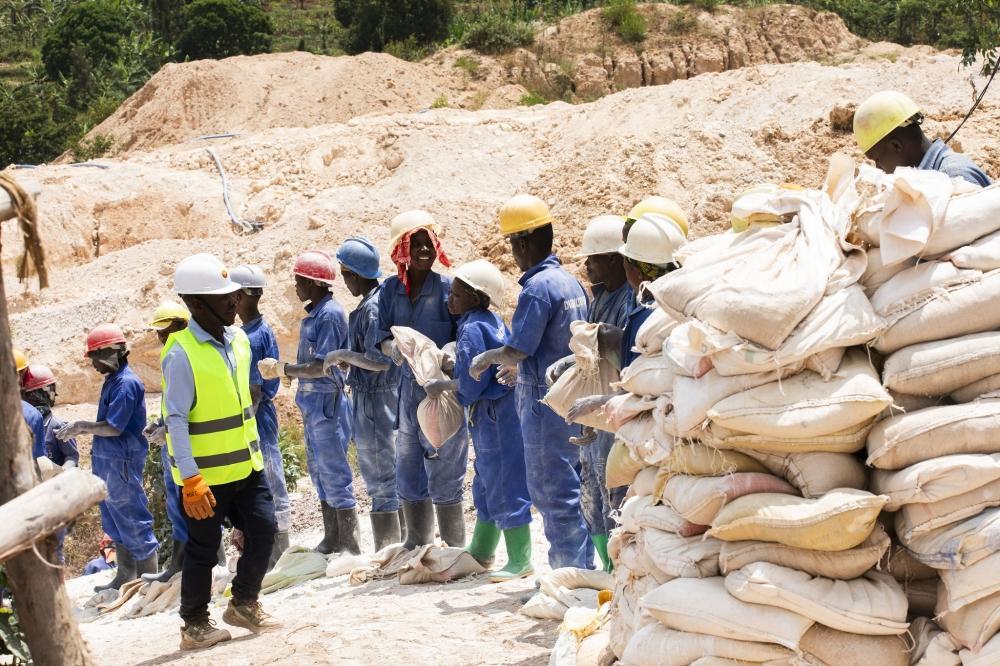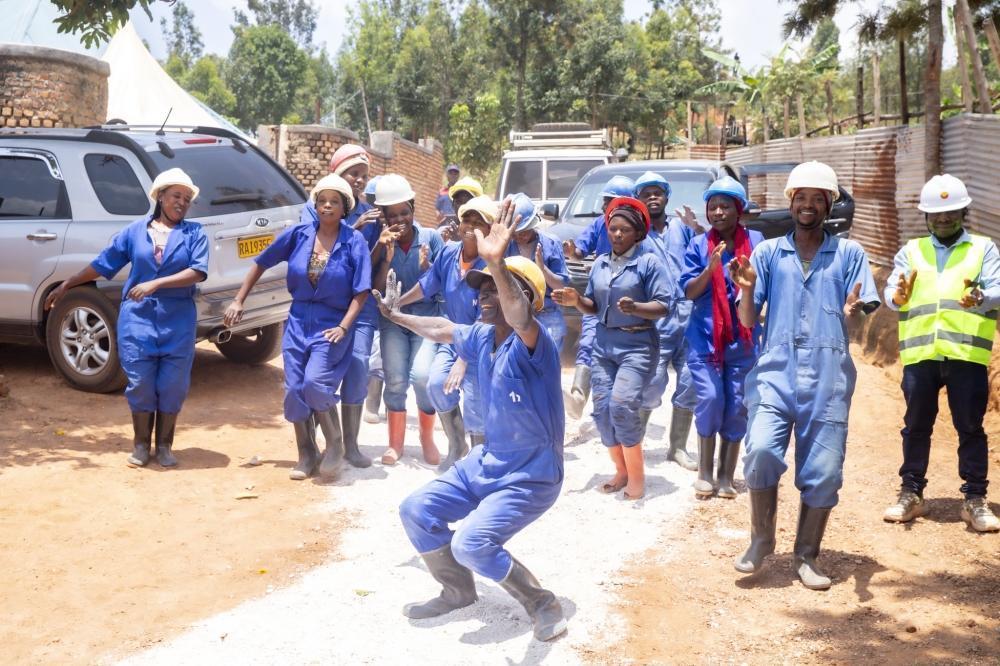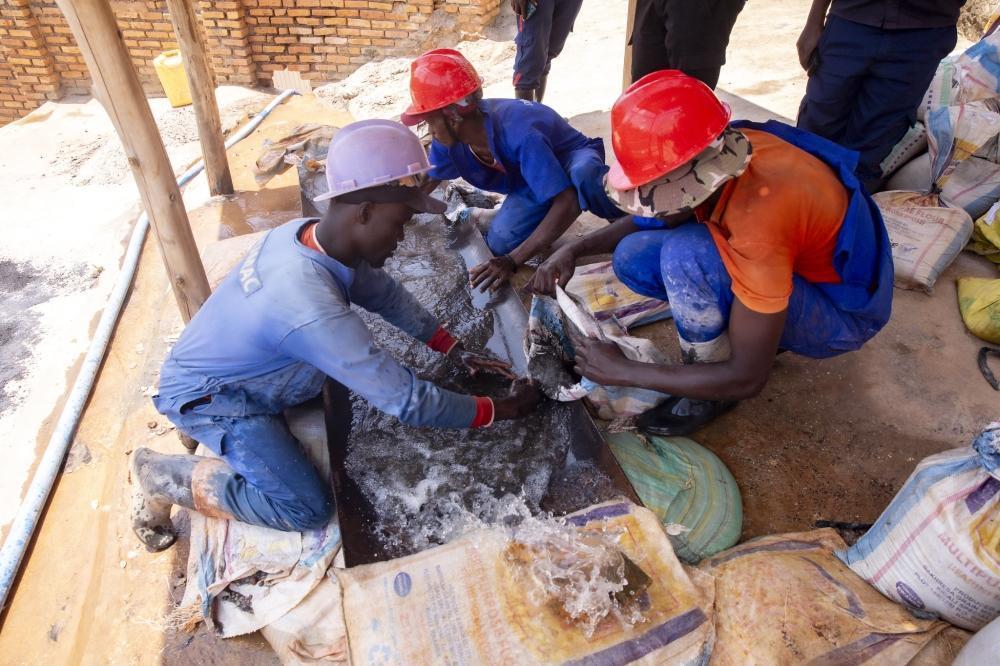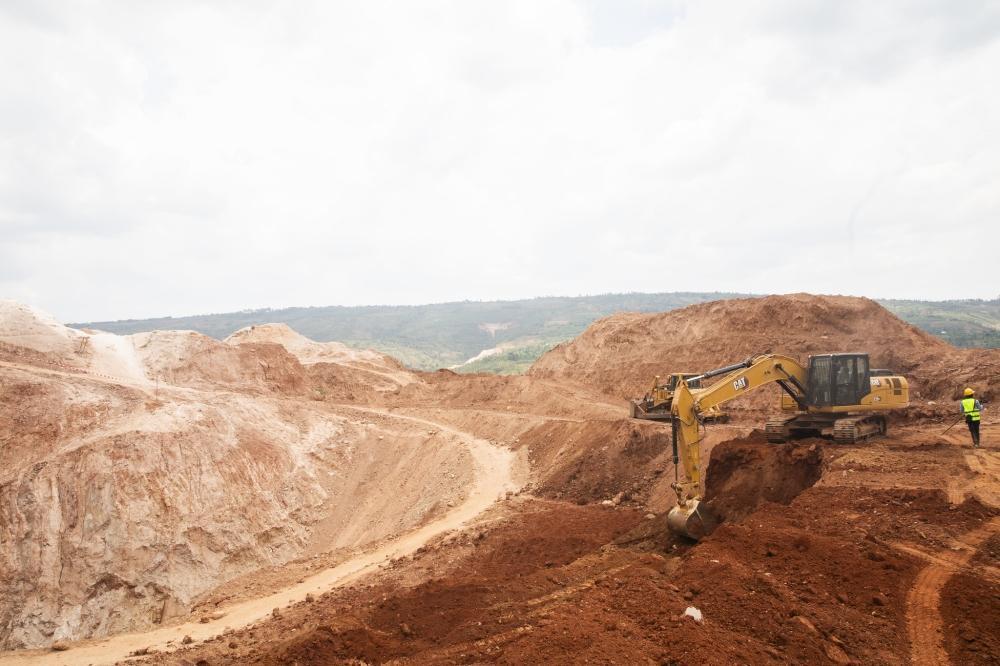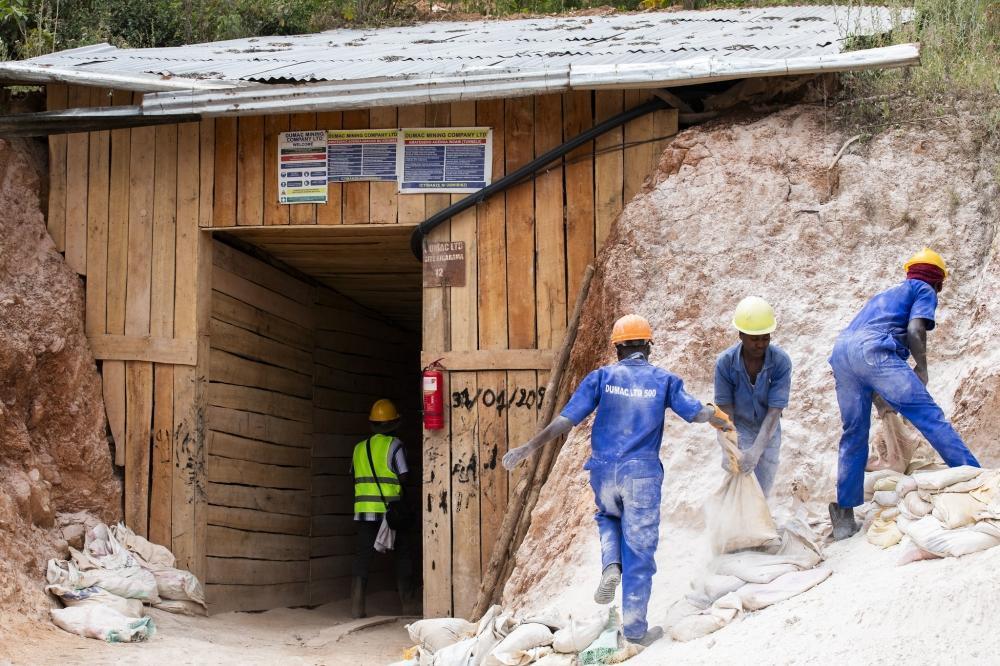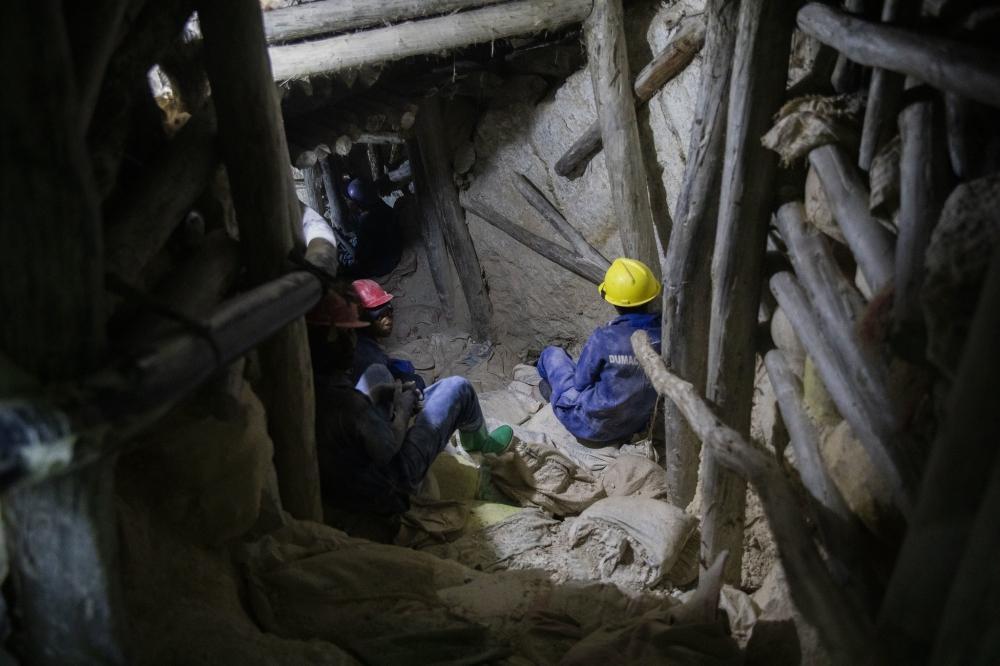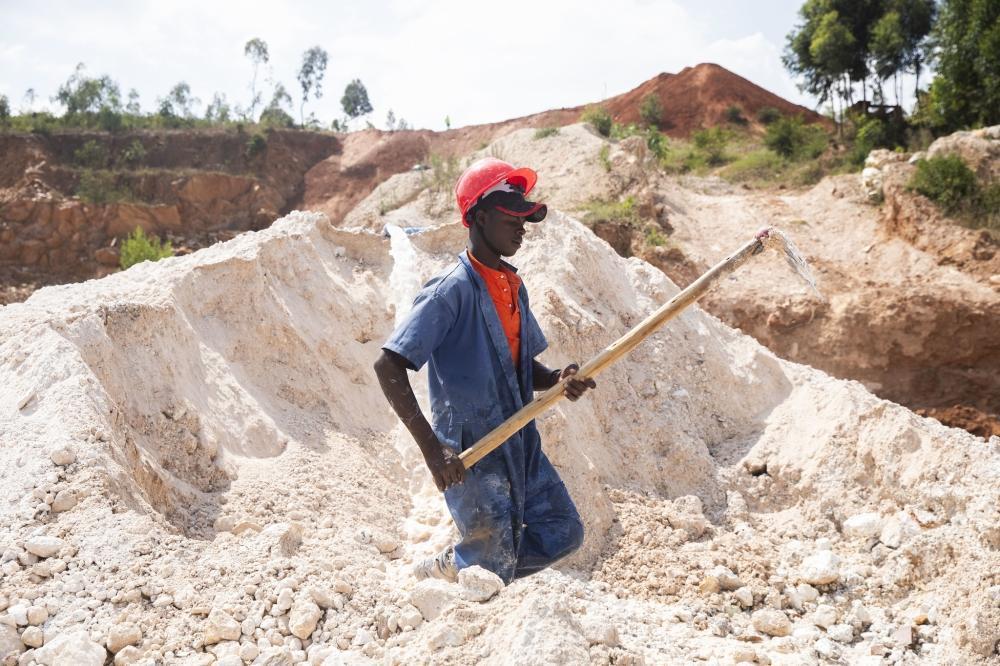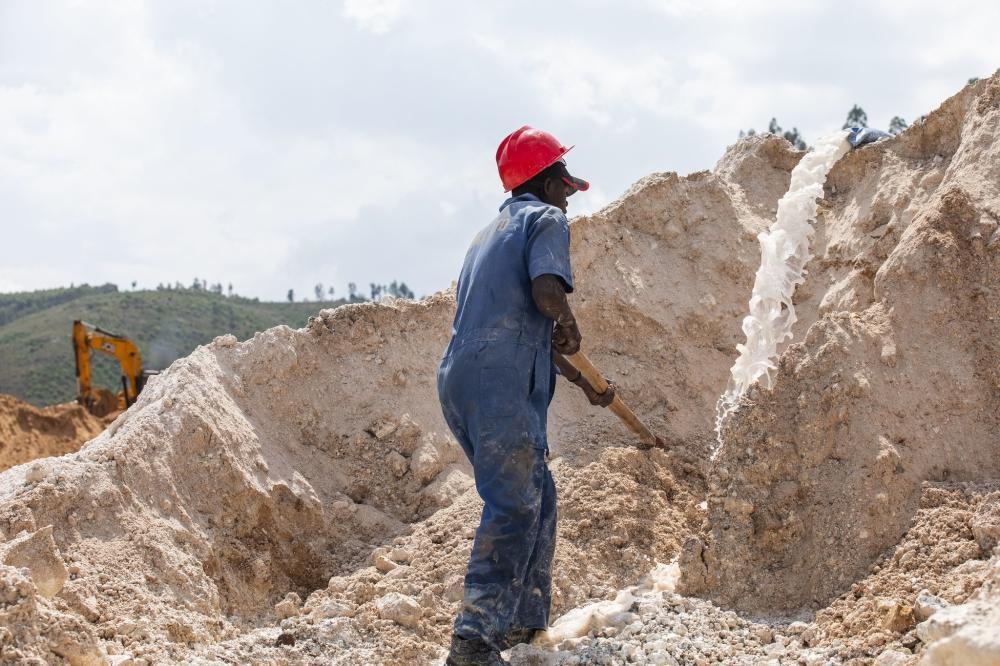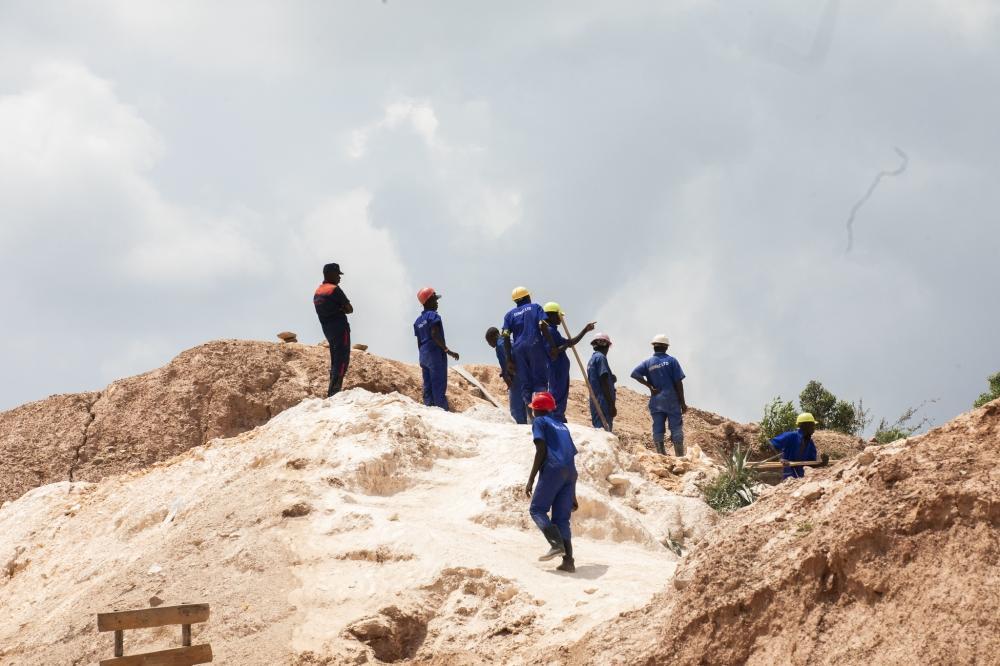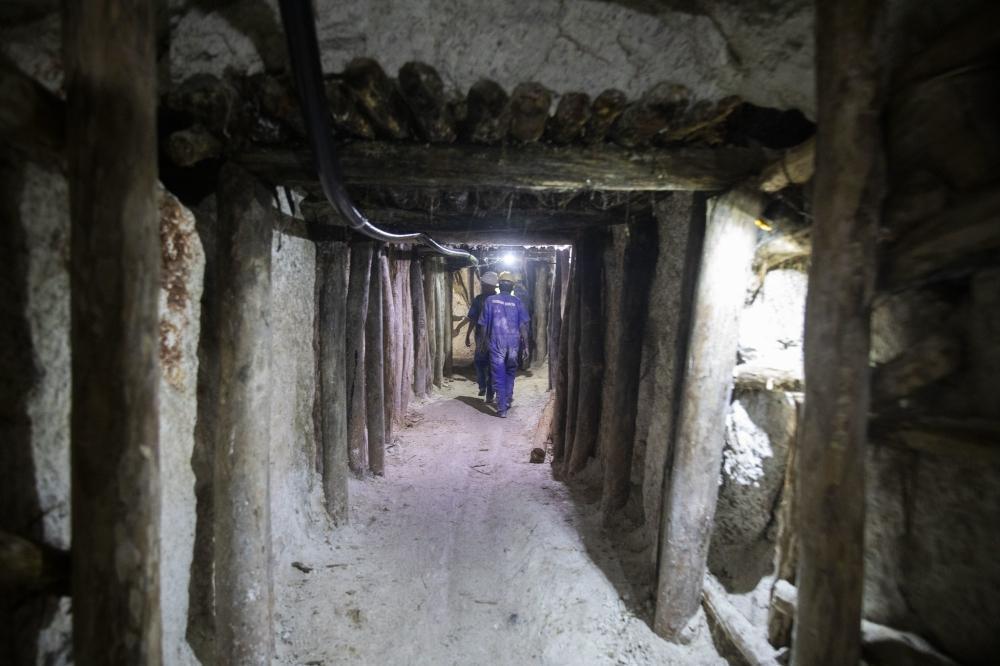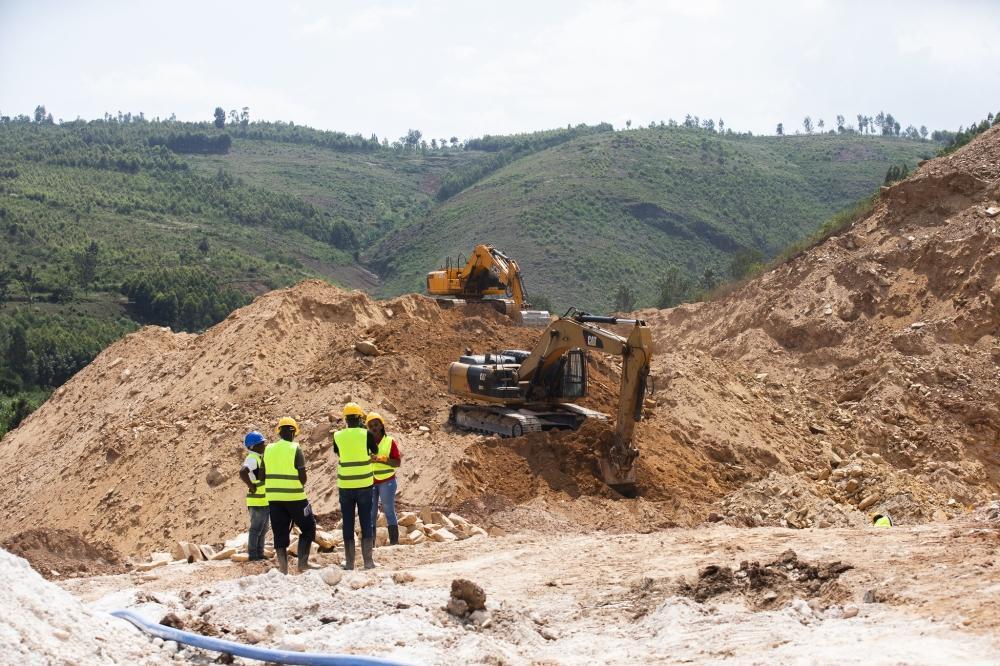Africa-Press – Rwanda. Jean-Bosco Kwizera is one of the few Rwandans who own mining concessions in the country. His company, DUMAC, has been mining coltan and cassiterite in Rwamagana District since 2018, growing steadily from using hammers and mattocks to equipment like excavators.
He started with a capital of Rwf 80 million in 2018, but now, he boasts a company worth Rwf 5 billion.
In an interview with The New Times during a visit to the site on Wednesday March 5, he said his story with mining goes all the way back almost 25 years ago when he was a student in his home district of Ngororero, a mineral-rich district that boasts pegmatites from which he always saw miners extracting minerals.
“My home area is filled with mountains and rocks from where people mine. As a student, I often saw people working in the mines. Later, I joined them and started to work as a miner too. My friends and I worked while trying to save money so that we can start our own investments,” he says.
Miners welcome guest at the site in Rwamagana
In 2018, with a capital of just Rwf 80 million and 120 workers, he was granted a license by the government to start mining activities in Rwamagana district, specifically in Rubona areas which boast large areas of pegmatites.
He says his work was not easy from the outset as it was almost fully artisanal. He depended on manual labour and basic tools like hammers and mattocks. The absence of electricity in the mining area also proved to be a challenge since it made it hard and expensive for him to pump water which is important in sorting of minerals.
In artisanal mining, pumping water is crucial in the gravity-based sorting of minerals, a method that relies on the differences in the densities of materials to separate valuable minerals from waste rock.
Due to such challenges, his company could only mine 800 kilograms of coltan and cassiterite, but a breakthrough came when the government introduced electricity at the mine, a development which led to increased production.
Coupled with an increased labour of 1058 workers now and the introduction of excavators, the company can now mine between 18 to 20 tonnes of minerals currently.
His company uses a combination of two mining methods: opencast mining and underground mining. The area has an opencast area where excavators dig to extract pegmatites, but there are also about six tunnels, the longest of which is more than a kilometre, where miners work.
The mining operations of DUMAC take place in the Rubona mining area, which is located in the Nzige, Mwulire, and Rubona sectors of Rwamagana District. The concession comprises two active mine sites of Kigarama and Manene.
DUMAC’s minerals are sold on the local market, to bigger companies which have international licenses.
Further exploration endeavours
Kwizera says the area has a lot of mineral wealth which is evidenced by how much his company can produce yet it is not the only one operating in the district. As such, he is working on an ambitious plan to invest into further exploration.
He has already done some exploration work, drilling four deep holes on the concession to find out how big its ore-body is. An ore body refers to a naturally occurring concentration of minerals within the earth’s crust.
Celestin Nsengimana, a geologist in charge of exploration at the concession, told The New Times that DUMAC is happy to invite investors who can partner with it towards further exploration.
He also reckons that more can be done to increase production, noting that currently, artisanal methods used for mining achieve only about 60 percent mineral recovery, meaning around 40 percent is lost.
If modern technology is introduced, he says recovery could increase to about 85 percent, leading to higher production.
“We plan to install a more mechanised system with various types of machinery,” he said.
Donat Nsengumuremyi, Division Manager for Mining and Inspection at the Rwanda Mine, Petroleum, and Gas Board (RMB), says pegmatites are widespread across Rwanda and these are a key source of coltan and cassiterite.
As local and international miners continue to take advantage of such resources, he emphasises the importance of mechanisation, noting that the government is working to promote it.
“Mechanisation requires significant investment, but we are working to increase its adoption across the country,” he pointed out, adding that Rwanda is looking to establish more smelters for minerals in order to add more value before exporting.
Cassiterite is the main ore mineral from which tin is extracted. Tin is used in various industries, including electronics, manufacturing, and packaging. For coltan, it is one of the most sought-after minerals today, thanks to its use in the production of tech tools like computers and smart phones.
Out of coltan two important minerals – tantalum and niobium, are extracted.
Tantalum, is an essential component in capacitors which regulate the flow of electricity in tiny circuit boards found in devices like computers and smartphones, while niobium is used in oil and gas pipelines, beams and girders for buildings and oil rigs, welding, electronics, optics, and so on.
Miners sort mines at Rwamagana District based site
For More News And Analysis About Rwanda Follow Africa-Press

